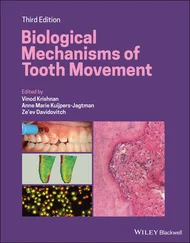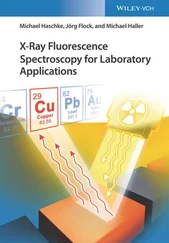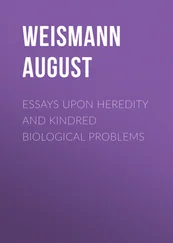X-Ray Fluorescence in Biological Sciences
Здесь есть возможность читать онлайн «X-Ray Fluorescence in Biological Sciences» — ознакомительный отрывок электронной книги совершенно бесплатно, а после прочтения отрывка купить полную версию. В некоторых случаях можно слушать аудио, скачать через торрент в формате fb2 и присутствует краткое содержание. Жанр: unrecognised, на английском языке. Описание произведения, (предисловие) а так же отзывы посетителей доступны на портале библиотеки ЛибКат.
- Название:X-Ray Fluorescence in Biological Sciences
- Автор:
- Жанр:
- Год:неизвестен
- ISBN:нет данных
- Рейтинг книги:5 / 5. Голосов: 1
-
Избранное:Добавить в избранное
- Отзывы:
-
Ваша оценка:
- 100
- 1
- 2
- 3
- 4
- 5
X-Ray Fluorescence in Biological Sciences: краткое содержание, описание и аннотация
Предлагаем к чтению аннотацию, описание, краткое содержание или предисловие (зависит от того, что написал сам автор книги «X-Ray Fluorescence in Biological Sciences»). Если вы не нашли необходимую информацию о книге — напишите в комментариях, мы постараемся отыскать её.
Discover a comprehensive exploration of X-ray fluorescence in chemical biology and the clinical and plant sciences X-Ray Fluorescence in Biological Sciences: Principles, Instrumentation, and Applications
X-Ray Fluorescence in Biological Sciences: Principles, Instrumentation, and Applications
X-Ray Fluorescence in Biological Sciences — читать онлайн ознакомительный отрывок
Ниже представлен текст книги, разбитый по страницам. Система сохранения места последней прочитанной страницы, позволяет с удобством читать онлайн бесплатно книгу «X-Ray Fluorescence in Biological Sciences», без необходимости каждый раз заново искать на чём Вы остановились. Поставьте закладку, и сможете в любой момент перейти на страницу, на которой закончили чтение.
Интервал:
Закладка:
Salvador et al. [70] used a spectrometer EDXRF (Mo‐anode, Zr‐filter, 25 kV, 10 mА) for determination of content of elements (22 ≤ Z ≤ 30) in five types of tea (camomile, mint, with a melissa, apple, black) from six producers. Preparation of the samples for analysis was brewing of tea, lyophilization and leaching. The resulting solution was then filtered on a special membrane and analyzed in a spectrometer (spectrum measurement for three hundred seconds). In order to control the accuracy of the results, the procedure was applied with an exposition of one hundred seconds for similarly prepared standards, each containing one element, Fe, Co, Ni, Cu, or Zn. According to the analysis results, the presence of Fe, Ni and Cu was found in all tea samples analyzed. Ti, Cr, Co, and Zn are present in chamomile tea samples and in apple tea; Ti, Co, and Zn in mint tea and Ti, Mn, Co, and Zn in melissa tea. The maximum content of Ti and Fe was obtained for tea from melissa – 10 and 100 ppm, respectively. The content of the remaining elements did not exceed 5 ppm. Brytov et al. [71] used a portable X‐ray scanning spectrometer СПАРК‐1‐2М (X‐ray tube БХ‐1, Ag anode) to identify tea samples. The authors compared 10 types of tea purchased in the commercial network of St. Petersburg. The material of the samples (2–3 g) was previously abraded for five minutes in an agate mortar. The ground samples were placed in a cuvette, and the surface was smoothed with quartz glass. Intensities of Kα‐lines Mn, Fe, Ni, Zn and scattered bremsstrahlung (background) with wavelength of 0.102 nm were measured. The measurement time for each line is 10 seconds. In the identification algorithm, the ratio of the emission intensities of the selected lines to the background intensity was used. Authors have shown that information on the content of four elements (Mn, Fe, Ni, and Zn) in tea samples is sufficient to identify the tea samples studied.
The procedure for determining the concentrations of Mg, K, Ca, Mn, Fe, Zn in tea samples was developed by Pereira et al. [29]. When developing a technique for determination of content of Mg, K, Ca, Mn, Fe, and Zn by a X‐ray fluorescent method in different types of tea (black, green tea, tea with a magnolia vine, with chicory, with a lemon, with a camomile, with mint, with apple and cinnamon, with a melissa and a bitter orange, with a wild strawberry, with peumus) authors used a desktop spectrometer of Shimadzu EDX 700 (Japan, the Rh‐anode, 50 W). For analysis, 200 mg of sample material was placed in 5 mm diameter Teflon cells and coated with Mylar film. Measurement conditions: air in spectrometric chamber, potential up to 50 kV, thickness of mylar film of Teflon cell 3 μm, measurement time‐ one hundred seconds. Besides the analyte elements in tea samples the presence of Si, P, S, Cl, and Cu is noted. For fruit tea samples, the metal content was 2 times lower than in fruit‐free tea. The authors obtained good results of Mg, K, Ca determination, standard deviation varied from 7 to 36%. In the case of Mn, Fe, and Zn, questionable results have been obtained which can be used as semi‐quantitative analysis results.
Tanizawa et al. [72] investigated the chemical composition and structure of the precipitate from Lipton Yellow tea formed on the surface of the mugs. The authors applied a complex of methods: XRF, SEM‐EDS, FTIR, XPS, CHN, and O analyzers, infrared spectroscopy, and X‐ray phase analysis. Distilled or tap water from Tokyo was used for brewing. The dark precipitate proved stable and insoluble in water and organic solvents (chloroform, acetone, tetrahydrofuran, dimethyl sulfoxide, methyl alcohol, and ethyl alcohol). The light precipitate was easily removed by distilled water. Analysis by XRF (3270E system, Rigaku) of the five‐day precipitate showed that the concentration of Ca in the precipitate after brewing in tap water was higher (65%) than in distilled water (50%), and the K (7%) and Si (10%) were lower in tap water, compared to distilled water – 23% and 15%, respectively. It is noted that K has greater solubility in tea solution compared to other elements.
The change in the elemental composition of Turkish tea (P, K, Ca, Mg, S, Cl, Mn, Zn, Al, Fe, Si, Rb, Cu, Ni, and Sr) depending on the collection time (May, July, September) has been investigated by Erkisli et al. [73]. A Rigaku ZSX‐100e crystal diffraction spectrometer (Rh anode) was used for semi‐quantitative element evaluation. Fresh green tea leaves were dried at 50 °C for one to two hours, then pressed into tablets using a hydraulic press. The obtained data showed maximum P, Cl, K, Mn, Ni, Cu levels for young tea leaves, and Mg, Al, Si, S, Ca, Fe, Zn, Rb, and Sr levels increase in tea collected on September.
Wastowski et al. [74] determined the inorganic components of commercial teas (dry leaves) and their infusions in hot water by energy‐dispersive X‐ray spectrometry. In this study, 14 different varieties of tea were selected from the most found and consumed in Brazil. A Shimadzu EDX‐720 X‐ray spectrometer was used. The main characteristics of this spectrometer were as follows: the x‐ray tube voltage was 15 keV (from Na to Sc) and 50 keV (from Ti to U), all measurements were performed under vacuum, with an integration time of 300 seconds. This spectrometer was able to identify only seven elements in dry tea: K, S, Ca, Cu, P, Fe, and Mn. Only S, Ca and K were recorded in infusions. The method of fundamental parameters was used to calculate concentrations from measured intensities of analytical lines [36, 42,75–77]. Although the K concentration was highest in commercial dry tea samples, it was found at low concentrations in infusions. For infusions, sulfur was the element that showed the greatest migration from tea leaf samples to their infusions. In addition, heavy metals were not found in any of them in concentrations that could be considered harmful to human health.
Li and Yu [78] evaluated optimal conditions for excitation and detection of Se Kα‐line in biological samples. For calibration five samples prepared in the laboratory and thirty CRM biological materials IGGE (China) were used: liver, huangqi, ginseng, spinach, milk powder, wheat flour, rice and corn flour, soybean powder, cabbage, tea, chicken, and apple. Specimens were prepared by pressing at high pressure. This ensured long‐term use of tablets without deteriorating the reproducibility of measurements. The experiment on the selection of optimal conditions of excitation and detection of Se Kα‐line radiation is performed on the energy‐dispersive X‐ray spectrometer Epsilon 5 (PANalytical, Holland) (combined ScW‐anode, Ge‐detector cooled with liquid nitrogen). A maximum X‐ray tube voltage of 100 kV, a current of up to 6 mA, and a variant with a Zr secondary target without a filter between the X‐ray tube window and the emitter proved to be preferable for excitation and detection of the Se Kα‐line emission for small Se contents. The limit of detection (LOD) of Se in biological samples was reduced to 0.1 μg/g (measurement time of one thousand seconds), as a result of the selection of the optimal conditions for measuring of Se.
Rajapaksha et al. [79] studied the elemental composition of Ceylon tea when it was classified by collection area, applying the energy‐dispersion table spectrometer SPECTRO2000 (Germany), complete with an X‐ray tube with a Pd anode and secondary targets from Co, Mo and Highly Oriented Pyrolytic Graphite. Fresh tea leaves, weighing 10 g, were frozen for 6 hours at −80 °C and lyophilized for 24 h. Then, they were ground to a fine powder, weighing 0.5 g and compressed into tablets. Standard plant materials (including spinach, olive, cabbage, and tea leaves, as well as hay) were used in the construction of the calibration function to extend the concentration range in the determination of Cl, Mn, Cu, and Rb. In calculating the calibration characteristics, the linear regression equation was applied. To account for fluorescence absorption by sample atoms, normalization of the intensity of characteristic radiation of determined elements by intensity of coherent and non‐coherent scattered radiation was used. Intensities for Kα‐line Mg, P, S, Cl were normalized for total coherently and non‐coherently scattered primary radiation intensity PdLα‐line, similarly for K, Ca, Mn ‐ total scattered radiation intensity CoKα secondary target, and for Fe, Cu, Zn, Br, Rb, Sr‐non‐coherent scattered radiation intensity, and intensity Mo Kα from secondary target.
Читать дальшеИнтервал:
Закладка:
Похожие книги на «X-Ray Fluorescence in Biological Sciences»
Представляем Вашему вниманию похожие книги на «X-Ray Fluorescence in Biological Sciences» списком для выбора. Мы отобрали схожую по названию и смыслу литературу в надежде предоставить читателям больше вариантов отыскать новые, интересные, ещё непрочитанные произведения.
Обсуждение, отзывы о книге «X-Ray Fluorescence in Biological Sciences» и просто собственные мнения читателей. Оставьте ваши комментарии, напишите, что Вы думаете о произведении, его смысле или главных героях. Укажите что конкретно понравилось, а что нет, и почему Вы так считаете.











